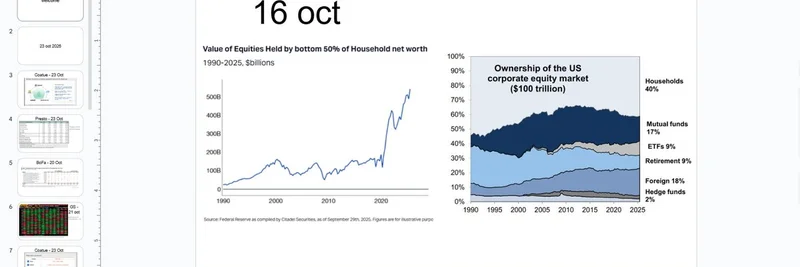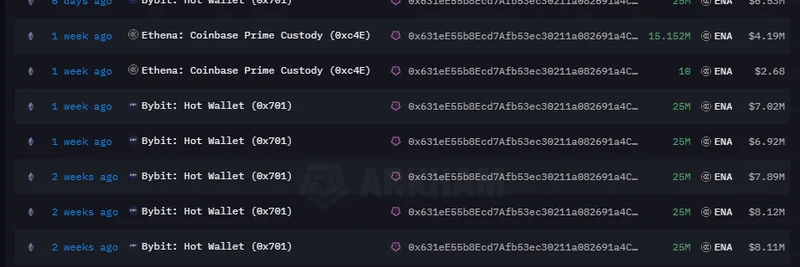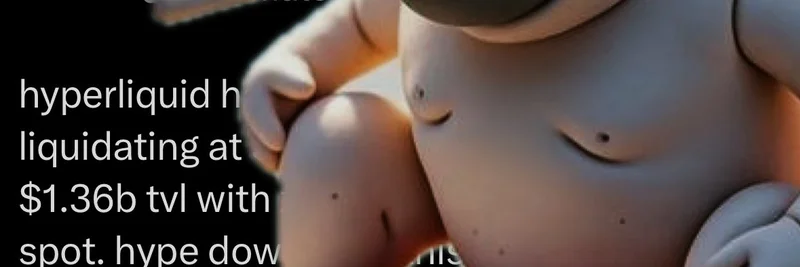In the fast-paced world of crypto and meme tokens, it's easy to get tunnel vision on blockchain-specific news. But sometimes, stepping back to look at traditional markets can offer fresh perspectives. Recently, crypto investor 0xkyle__ shared a thought-provoking slide on X about equity markets, highlighting trends in household equity ownership. As someone who's navigated both tradfi and crypto waters, I see real value in bridging these worlds—especially for meme token enthusiasts looking to level up their game.
The slide, dated October 16, pulls data from the Federal Reserve and breaks down two key visuals. On the left, we have a line chart tracking the value of equities held by the bottom 50% of U.S. households by net worth, from 1990 to 2025. It's measured in billions of dollars and shows a stark reality: this group's equity holdings have remained relatively flat over decades, with a brief spike around the dot-com era followed by a dip and modest recovery. Today, it's hovering around a few hundred billion—peanuts compared to the overall market.
This ties into broader themes of wealth inequality. In meme token land, we often talk about "retail vs. whales," where big holders dominate price action. Similarly, in equities, the bottom half of households hold a tiny sliver of the pie. For blockchain practitioners, this is a reminder that meme tokens could democratize access, but without mindful design, they might mirror these inequities. Think about it: projects with fair launches and community-driven governance might help spread the wealth more evenly, much like how index funds have made equities more accessible.
Shifting to the right chart, it's a stacked area graph depicting ownership of the U.S. corporate equity market, valued at a whopping $100 trillion. It breaks down shares held by households, mutual funds, ETFs, retirement accounts, hedge funds, and foreign investors from 1990 to 2025. Households still lead at about 40%, but that's down from higher levels in the past. Meanwhile, ETFs have surged to 9%, reflecting the rise of passive investing. Foreign ownership sits at 18%, hedge funds at a slim 2%, and so on.
What's the crypto angle here? Meme tokens often thrive on hype and community, but understanding institutional flows—like how ETFs have transformed equities—can inform predictions for blockchain adoption. With spot Bitcoin ETFs already making waves, imagine meme token ETFs or tokenized real-world assets (RWAs) bringing tradfi money into our space. This could amplify volatility but also liquidity, creating opportunities for savvy traders.
0xkyle__ mentioned this as part of his journey into equities, keeping a "running slide" of interesting finds to build a holistic market view. That's solid advice for anyone in crypto: diversify your knowledge base. Don't just scroll CT (Crypto Twitter); peek at stock market data, macro trends, and even global events. It helps spot parallels, like how economic shifts affect risk appetite in both equities and memes.
For meme token investors, these insights underscore the importance of context. When a token pumps on narrative alone, ask: Who's holding the bag? Is it retail-driven like early Dogecoin, or institution-heavy? Tools like on-chain analytics can reveal ownership distribution, much like the Fed data here.
In wrapping up, threads like this from 0xkyle__ are gold for building alpha. They encourage us to think bigger, connecting dots between tradfi and defi. If you're grinding in meme tokens, use this as a prompt to explore equity trends— it might just give you an edge in the next bull run. Stay curious, folks.




